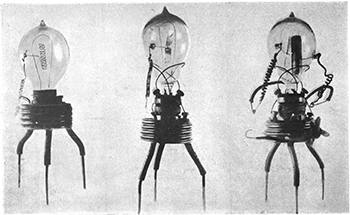- Hospital Hacking (Bloomberg) — interesting for both lax regulation (“The FDA seems to literally be waiting for someone to be killed before they can say, ‘OK, yeah, this is something we need to worry about,’ ” Rios says.) and the extent of the problem (Last fall, analysts with TrapX Security, a firm based in San Mateo, Calif., began installing software in more than 60 hospitals to trace medical device hacks. […] After six months, TrapX concluded that all of the hospitals contained medical devices that had been infected by malware.). It may take a Vice President’s defibrillator being hacked for things to change. Or would anybody notice?
- Cybersecurity and Data Science — pointers to papers in different aspects of using machine learning and statistics to identify misuse and anomalies.
- Real-time Face Substitution in Javascript — this is awesome. Moore’s Law is amazing.
- Multi-Agent Systems — undergraduate textbook covering distributed systems, game theory, auctions, and more. Electronic version as well as printed book.
"data science" entries


Four short links: 16 November 2015
Hospital Hacking, Security Data Science, Javascript Face-Substitution, and Multi-Agent Systems Textbook

Building systems for massive scale data applications
The O’Reilly Data Show podcast: Tyler Akidau on the evolution of systems for bounded and unbounded data processing.
Subscribe to the O’Reilly Data Show Podcast to explore the opportunities and techniques driving big data and data science.
Many of the open source systems and projects we’ve come to love — including Hadoop and HBase — were inspired by systems used internally within Google. These systems were described in papers and implemented by people who needed frameworks that could comfortably scale to massive data sets.
Google engineers and scientists continue to publish interesting papers, and these days some of the big data systems they describe in publications are available on their cloud platform.
In this episode of the O’Reilly Data Show, I sat down with Tyler Akidau one of the lead engineers in Google’s streaming and Dataflow technologies. He recently wrote an extremely popular article that provided a framework for how to think about bounded and unbounded data processing (a follow-up article is due out soon). We talked about the evolution of stream processing, the challenges of building systems that scale to massive data sets, and the recent surge in interest in all things real time:
On the need for MillWheel: A new stream processing engine
At the time [that MillWheel was built], there was, as far as I know, literally nothing externally that could handle the scale that we needed to handle. A lot of the existing streaming systems didn’t focus on out-of-order processing, which was a big deal for us internally. Also we really wanted to hit a strong focus on consistency — being able to get absolutely correct answers. … All three of these things were lacking in at least some area in [the systems we examined].


Four short links: 26 October 2015
Dataflow Computers, Data Set Explorer, Design Brief, and Coping with Uncertainty
- Dataflow Computers: Their History and Future (PDF) — entry from 2008 Wiley Encyclopedia of Computer Science and Engineering.
- Mirador — open source tool for visual exploration of complex data sets. It enables users to discover correlation patterns and derive new hypotheses from the data.
- How 23AndMe Got Regulatory Approval Back (Fast Company) — In order to meet FDA requirements, the design team had to prove that the reports provided on the website would be comprehensible to any American consumer, regardless of their background or education level. And you thought YOUR design brief was hard.
- Getting Comfortable with Uncertainty (The Atlantic) — We have this natural distaste for things that are unfamiliar to us, things that are ambiguous. It goes up from situational stressors, on an individual level and a group level. And we’re stuck with it simply because we have to be ambiguity-reducers.


Four short links: 23 October 2015
Data Science, Temporal Graph, Biomedical Superstars, and VR Primer
- 50 Years of Data Science (PDF) — Because all of science itself will soon become data that can be mined, the imminent revolution in Data Science is not about mere “scaling up,” but instead the emergence of scientific studies of data analysis science-wide.
- badwolf — a temporal graph store from Google.
- Why Biomedical Superstars are Signing on with Google (Nature) — “To go all the way from foundational first principles to execution of vision was the initial draw, and that’s what has continued to keep me here.” Research to retail, at Google scale.
- VR Basics — intro to terminology and hardware in the next gen of hardware, in case you’re late to the goldrush^w exciting field.

Turning big data into actionable insights
The O’Reilly Data Show podcast: Evangelos Simoudis on data mining, investing in data startups, and corporate innovation.
Subscribe to the O’Reilly Data Show Podcast to explore the opportunities and techniques driving big data and data science.
Can developments in data science and big data infrastructure drive corporate innovation? To be fair, many companies are still in the early stages of incorporating these ideas and tools into their organizations.
Evangelos Simoudis has spent many years interacting with entrepreneurs and executives at major global corporations. Most recently, he’s been advising companies interested in developing long-term strategies pertaining to big data, data science, cloud computing, and innovation. He began his career as a data mining researcher and practitioner, and is counted among the pioneers who helped data mining technologies get adopted in industry.
In this episode of the O’Reilly Data Show, I sat down with Simoudis and we talked about his thoughts on investing, data applications and products, and corporate innovation:
Open source software companies
I very much appreciate open source. I encourage my portfolio companies to use open source components as appropriate, but I’ve never seen the business model as being one that is particularly easy to really build the companies around them. Everybody points to Red Hat, and that may be the exception, but I have not seen companies that have, on the one hand, remained true to the open source principles and become big and successful companies that do not require constant investment. … The revenue streams never prove to be sufficient for building big companies. I think the companies that get started from open source in order to become big and successful … [are] ones that, at some point, decided to become far more proprietary in their model and in the services that they deliver. Or they become pure professional services companies as opposed to support services companies. Then they reach the necessary levels of success.

Get started with cloud-based data science
Learn how to deploy machine learning solutions using Azure ML.
Cloud-based machine learning platforms, like Microsoft’s Azure Machine Learning (Azure ML), provide a simplified path to create and deploy analytic solutions. Azure ML is a fully managed and secure machine learning platform that resides within the Microsoft Cortana Analytics Suite.
Azure ML workflows (known as “experiments”) are constructed using a combination of drag-and-drop modules, SQL, R, and Python scripts. The wide range of built modules support the typical steps in a machine learning workflow, from data ingestion and data munging to model construction and cross validation.
Once your Azure ML experiment is ready, there are several options to deploy it. Azure ML experiments can access large-scale data stored in Azure Blob storage, Azure SQL and Hive, to name a few options. Similarly, your experiment can write results back to multiple scalable Azure storage options.

Resolving transactional access and analytic performance trade-offs
The O’Reilly Data Show podcast: Todd Lipcon on hybrid and specialized tools in distributed systems.
Subscribe to the O’Reilly Data Show Podcast to explore the opportunities and techniques driving big data and data science.
 In recent months, I’ve been hearing about hybrid systems designed to handle different data management needs. At Strata + Hadoop World NYC last week, Cloudera’s Todd Lipcon unveiled an open source storage layer — Kudu — that’s good at both table scans (analytics) and random access (updates and inserts).
In recent months, I’ve been hearing about hybrid systems designed to handle different data management needs. At Strata + Hadoop World NYC last week, Cloudera’s Todd Lipcon unveiled an open source storage layer — Kudu — that’s good at both table scans (analytics) and random access (updates and inserts).
While specialized systems will continue to serve companies, there will be situations where the complexity of maintaining multiple systems — to eke out extra performance — will be harder to justify.
During the latest episode of the O’Reilly Data Show Podcast, I sat down with Lipcon to discuss his new project a few weeks before it was released. Here are a few snippets from our conversation:
HDFS and Hbase
[Hadoop is] more like a file store. It allows you to upload files onto an arbitrarily sized cluster with 20-plus petabytes, in single clusters. The thing is, you can upload the files but you can’t edit them in place. To make any change, you have to basically put in a new file. What HBase does in distinction is that it has more of a tabular data model, where you can update and insert individual row-by- row data, and then randomly access that data [in] milliseconds. The distinction here is that HDFS is pretty good for large scans where you’re putting in a large data set, maybe doing a full parse over the data set to train a machine learning model or compute an aggregate. If any of that data changes on a frequent basis or if you want to stream the data in or randomly access individual customer records, you’re kind of out of luck on HDFS. Read more…

Specialized and hybrid data management and processing engines
A new crop of interesting solutions for the complexity of operating multiple systems in a distributed computing setting.
The 2004 holiday shopping season marked the start of Amazon’s investigation into alternative database technologies that led to the creation of DynamoDB — a key-value storage system that went onto inspire several NoSQL projects.
A new group of startups began shifting away from the general-purpose systems favored by companies just a few years earlier. In recent years, we’ve seen a diverse set of DBMS technologies that specialize in handling particular workloads and data models such as OLTP, OLAP, search, RDF, XML, scientific applications, etc. The success and popularity of such systems reinforced the belief that in order to scale and “go fast,” specialized systems are preferable.
In distributed computing, the complexity of maintaining and operating multiple specialized systems has recently led to systems that bridge multiple workloads and data models. Aside from multi-model databases, there are an emerging number of storage and compute engines adept at handling different workloads and problems. At this week’s Strata + Hadoop World conference in NYC, I had a chance to interact with the creators of some of these new solutions.
OLTP (transactions) and OLAP (analytics)
One of the key announcements at Strata + Hadoop World this week was Project Kudu — an open source storage engine that’s good at both table scans (analytics) and random access (updates and inserts). Its creators are quick to point out that they aren’t out to beat specialized OLTP and OLAP systems. Rather, they’re shooting to build a system that’s “70-80% of the way there on both axes.” The project is very young and lacks enterprise features, but judging from the reaction at the conference, it’s something the big data community will be watching. Leading technology research firms have created a category for systems with related capabilities: HTAP (Gartner) and Trans-analytics (Forrester).

Accelerating real-time analytics with Spark
Integration of the data supply chain is key to a reliable and fast big data analytics deployment.
Watch our free webcast “Accelerating Advanced Analytics with Spark” to learn about the architecture, applications, and best practices of Apache Spark.
Apache Hadoop is a mature development framework, which coupled with its large ecosystem, and support and contributions from key players such as Cloudera, Hortonworks, and Yahoo, provides organizations with many tools to manage data of varying sizes.
In the past, Hadoop’s batch-oriented nature using MapReduce was sufficient to meet the processing needs of many organizations. However, increasing demands for faster processing of data have emerged. These demands have been driven by recent developments in streaming technologies, the Internet of Things (IoT) and real-time analytics, to name just a few. These new demands have required new processing models. One significant new technology today that is being used to meet these demands and is gaining considerable interest and widespread support is Apache Spark. Spark’s speed and versatility make it a key part of today’s big-data processing stack in industries from energy to finance. Read more…





